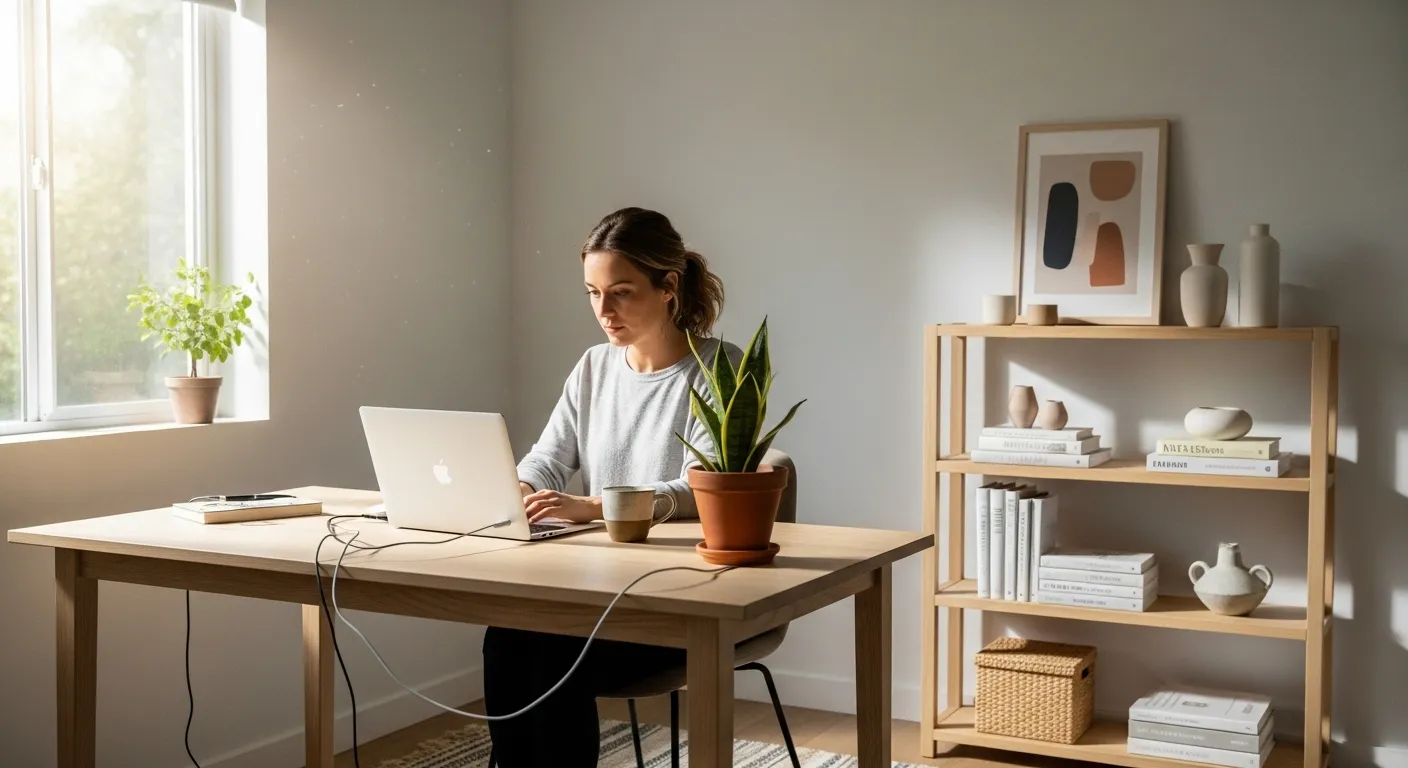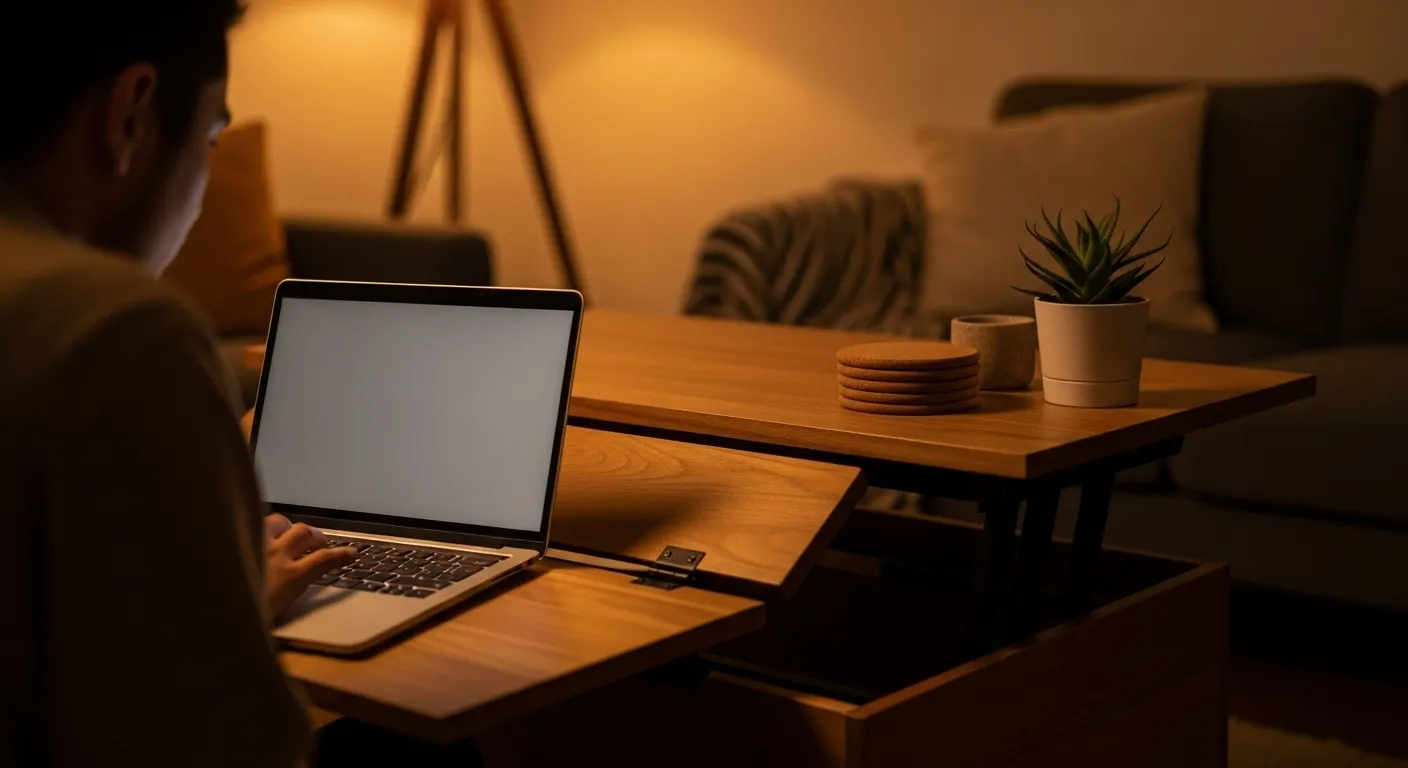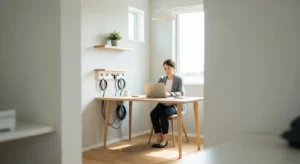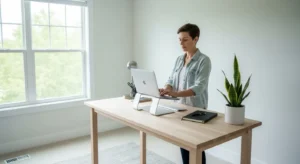
Welcome to TheFocusedMethod.com, where we believe that a calm environment is the foundation for a focused life. If you’ve ever felt that your home works against you, you’re not alone. The constant search for keys, the stack of mail that never shrinks, the surfaces that seem to attract clutter overnight—each of these is a point of friction. Friction is the invisible force that drains your energy, complicates simple tasks, and adds a low hum of stress to your day. Maintaining an organized home isn’t about willpower, marathon cleaning sessions, or possessing a rare “organizing gene.” It’s about designing simple, intelligent systems that do the heavy lifting for you.
The secret to a consistently tidy home is not more effort, but less. It’s about shifting your focus from reactive tidying to proactive systems. Imagine a home where every item has a logical resting place, where daily routines gently guide things back to order, and where visual noise is replaced by visual calm. This reality is more accessible than you think. It doesn’t require expensive containers or a complete overhaul of your life. It requires a new perspective: viewing your home as a functional system designed to support you, not an aesthetic challenge you must constantly conquer.
In this guide, we’ll explore the art of tidying with minimal effort. We will dismantle the idea that you need to be “naturally organized” and instead equip you with practical, sustainable home hacks and strategies. We will introduce you to core concepts like working zones, the one-touch rule, and reset points—small habits that create a powerful ripple effect. Our goal is to help you create a low-maintenance environment that feels restorative and allows you to dedicate your precious energy to what truly matters. Let’s begin the journey toward a more organized home, one simple system at a time.
📚 Table of Contents
- Designing for Flow: Zones, Homes, and Reducing Friction
- The Power of the Reset: Daily and Weekly Routines
- Thriving in a Small Footprint: Strategies for Limited and Shared Spaces
- From Chaos to Calm: Two Real-World Makeovers
- Frequently Asked Questions About Maintaining an Organized Home
- How do I tackle a huge backlog of paper clutter? I feel too overwhelmed to even start.
- How can I get my family or roommates on board with these new systems?
- What’s the best way to handle sentimental items that don’t have a functional “home”?
- My apartment is tiny. I feel like I just don’t have enough space for everything to have a “home.” What should I do?
- I understand the concepts, but I still feel paralyzed by the sheer amount of clutter. Where is the absolute best place to start?
- Your Journey to a Low-Effort Tidy Home Starts Now
Designing for Flow: Zones, Homes, and Reducing Friction
The foundation of maintaining an organized home rests on a simple principle: make the right choice the easiest choice. We achieve this not through rigid rules, but by designing our environment to guide our actions effortlessly. This starts with understanding and implementing concepts that reduce decision fatigue and physical friction. Before you buy a single basket or label maker, you must first define the purpose and flow of your space.
First, let’s talk about working zones. A working zone is any area where a specific activity happens. Your kitchen has multiple zones: a food prep zone, a cooking zone, a dishwashing zone, and a food storage zone. Your entryway is a transition zone. Your favorite armchair is a reading zone. The goal is to store everything you need for an activity within the zone where that activity occurs. Scissors and tape don’t belong in a kitchen drawer if you only ever open packages in your entryway or office. By storing items at their point of use, you eliminate the friction of having to search for them, making tasks quicker and cleanup intuitive. You’ll find yourself naturally putting things back where they belong because their “home” is the most logical place for them to be.
This leads directly to the one-touch rule, a powerful habit for preventing clutter before it starts. The rule is simple: when you bring an item into your home or finish using it, deal with it completely in one touch. Instead of dropping mail on the counter to sort later, you open it over the recycling bin, file the important papers, and discard the junk immediately. Instead of draping your coat over a chair, you hang it in the closet. Each time you defer a decision—setting something down “for now”—you create a pile of future tasks. The one-touch rule transforms these deferred decisions into immediate, low-effort actions, preventing the buildup that leads to overwhelming clutter.
An environment designed this way often requires a label-light approach. While labels have their place for opaque boxes in deep storage, your daily-use items shouldn’t require them. If your coffee mugs are in the cabinet right above the coffee maker, you don’t need a label that says “Mugs.” The zone itself is the label. The system is so intuitive that its function is self-evident. This reduces what we call visual friction, which is the mental load created by a cluttered or overly complex environment. A space with high visual friction—cluttered countertops, overflowing shelves, a sea of mismatched containers—is draining. A space with low visual friction, where surfaces are clear and items are stored logically within their zones, feels calm and energizing. By designing for flow, you are not just organizing your things; you are organizing your mind.

The Power of the Reset: Daily and Weekly Routines
A perfectly organized system will still encounter daily entropy. Life is messy. The key to maintaining a tidy home isn’t preventing mess altogether, but rather having an efficient way to restore order. This is where daily and weekly resets come in. A reset is a short, focused burst of activity designed to bring a space back to its baseline state of organization. It’s not deep cleaning; it’s system maintenance.
The most effective strategy is the 10-minute daily reset. Choose a consistent time, like right after dinner or before bed, and set a timer for just ten minutes. During this time, your only goal is to reset your home’s main reset points. A reset point is a high-traffic, clutter-prone surface that has a disproportionate impact on how tidy your home feels. Common reset points include the kitchen counter, the coffee table, the dining table, and the entryway console. For ten minutes, you simply walk through your home and put things back in their designated homes. You wipe down the counter, stack the magazines, hang up the coats, and put the remote controls back in their basket. It’s a surprisingly powerful habit. Ten minutes is too short to feel overwhelming, but it’s long enough to prevent daily clutter from accumulating into a weekend-long project.
This reset mentality extends to our personal spaces, particularly the dreaded paper and digital clutter. Your desk or entryway should have a simple “inbox” system—a single tray or folder where all incoming papers go. A weekly reset for this inbox is crucial for maintaining an organized home. Once a week, set aside 15 minutes to process the inbox to zero using the one-touch rule. Pay the bill and file the statement, add the event to your calendar and recycle the invitation, scan the document and shred the original. By batching this task, you avoid the constant distraction of paper and handle it efficiently in one go.
The same principle applies to your digital life, a major source of modern visual friction. Your computer desktop is a prime reset point. It should not be a storage folder. At the end of each day, take two minutes to drag all new files from your desktop into a single “Processing” folder. Then, during your weekly reset, sort the contents of that folder. Archive project files, delete installers and old downloads, and rename important documents with a consistent format (e.g., YYYY-MM-DD_ProjectName_DocumentType.pdf). This simple digital hygiene prevents your virtual workspace from becoming as cluttered and stressful as a physical one. These small, consistent resets are the engine of a low-effort, tidy home. They are the opposite of a frantic cleaning spree; they are a calm, steady practice of restoring order.

Thriving in a Small Footprint: Strategies for Limited and Shared Spaces
The principles of maintaining an organized home are universal, but their application must be adapted to the realities of your living situation. For those in small apartments or shared homes, the challenge is not just organization, but optimization. Limited space and the presence of others can test any system, but the right home hacks can create a sense of calm and order even in the coziest of quarters.
In a small apartment, every square inch counts. The key is to think vertically and multi-functionally. Walls are your greatest untapped resource. Instead of a wide bookshelf, consider tall, narrow ones that draw the eye upward and maximize storage without eating up valuable floor space. Use over-the-door organizers for shoes, cleaning supplies, or pantry items. Look for furniture that does double duty. An ottoman with hidden storage can hold blankets and magazines. A coffee table with a lift-top can serve as a workspace and a place to store electronics. When you have less space, each item you own must justify its existence. Be ruthless about what you allow to take up residence. A “one in, one out” policy—where you must let go of an old item for every new one you bring in—is a powerful tool for preventing accumulation in a small home.
Navigating shared spaces, whether with a partner, family, or roommates, requires communication and compromise. The concept of working zones becomes even more critical. Clearly, but gently, define the purpose of common areas. The dining table is for eating, not for becoming a permanent home for one person’s laptop and paperwork. The entryway console is for keys and mail, not a collection of everyone’s pocket contents. The most successful approach is to focus on shared systems rather than individual habits. Create a “common ground” basket in the living room for items that get left out—remotes, chargers, a book. During the daily reset, anyone can quickly return items from the basket to their proper homes. For personal clutter that migrates into common areas, a “clutter basket” for each person can be a diplomatic solution. Instead of nagging, simply place their stray items into their basket for them to put away later. This respects their belongings while keeping shared zones clear.
Achieving a tidy home does not have to be expensive. Many of the best organizational solutions are low-cost or free. Before heading to a store like The Container Store or IKEA, shop your own home. A beautiful ceramic mug can hold pens on a desk. A sturdy shoebox, wrapped in simple paper, can organize toiletries under the sink. Clear glass jars from pasta sauce can be washed and used to store dry goods in the pantry, creating a uniform, calming look. The goal is function first, aesthetics second. An effective system using what you already have is far better than a beautiful but impractical one that you have to buy. The most important investment is not in products, but in the time it takes to design a system that truly works for your unique space and lifestyle.

From Chaos to Calm: Two Real-World Makeovers
Theory is helpful, but seeing these principles in action provides a clear roadmap. Let’s walk through two common household chaos zones—the home office desk and the kitchen command center—and apply our systems-focused approach to transform them from points of friction to hubs of flow and efficiency.
Worked Example 1: The Overwhelmed Home Office
The Before: Imagine a desk piled high with papers, old sticky notes clinging to the monitor, and a tangle of charging cables. Pens are scattered, and finding a paperclip requires a five-minute excavation. This space screams visual friction. Every time you sit down to work, your first task is to clear a space, immediately draining your focus and energy. The problem isn’t a lack of space; it’s a lack of defined zones and an effective reset routine.
The Systemic Makeover: We begin by creating working zones. The primary computer area is the “Digital Zone.” The only things allowed here are the monitor, keyboard, mouse, and a lamp. To the left, we establish an “Analog Zone” with a single vertical file holder for active projects and a sleek pen cup. To the right, we create an “Inbox Zone” with a single, simple paper tray. All other supplies—staplers, extra pens, paper clips—are moved into the top desk drawer, their point of use. We apply the one-touch rule to cables, bundling them neatly and securing them to the back of the desk. The final step is establishing a reset point. The desk surface itself is the reset point. The five-minute “end of day” reset involves clearing everything off the surface except the zoned essentials. New papers go into the inbox, finished project papers are filed, and pens are returned to their cup. The result is a desk that is ready for work each morning, creating an environment of calm focus instead of chaotic reaction. This is how you achieve a consistently organized home office.
Worked Example 2: The Cluttered Kitchen Command Center
The Before: A stretch of kitchen counter has become a dumping ground. It holds a mountain of mail, school permission slips, keys, stray batteries, and coupons. It’s the epicenter of household paper clutter, and finding anything is impossible. Every meal prep begins with pushing the pile further down the counter. This is a system failure, where a lack of designated homes has led to total chaos.
The Systemic Makeover: We first reclaim the space by clearing it completely. Then, we build a new system based on zones and the one-touch rule. We install a small wall-mounted organizer. This organizer has a few key components. First, a mail slot designated as the household “Inbox”—all incoming paper goes here and only here. Second, a few hooks underneath for keys. This gives them a non-negotiable home. Third, a small magnetic whiteboard for urgent reminders, replacing the flurry of sticky notes. We place a recycling bin directly below this area. Now, the routine changes. When mail comes in, you stand at the command center and apply the one-touch rule: junk mail goes directly into the recycling bin, bills go into a “To Pay” folder within the inbox, and magazines go to the coffee table. Keys are hung up immediately upon entering. This entire process takes less than 60 seconds. The weekly reset involves processing the “To Pay” folder and wiping the whiteboard clean. The counter stays clear, the friction is gone, and the home runs more smoothly. This is tidying with minimal effort in its purest form.

Frequently Asked Questions About Maintaining an Organized Home
Even with the best systems in place, specific challenges can arise. Here are answers to some of the most common questions we hear at TheFocusedMethod.com about keeping a tidy home for the long haul.
How do I tackle a huge backlog of paper clutter? I feel too overwhelmed to even start.
The key to overcoming a paper backlog is to stop the inflow and batch the outflow. First, establish your simple inbox system immediately for all new papers. This prevents the pile from growing. For the existing pile, do not try to sort it all at once. Instead, schedule two 25-minute “paper reset” sessions per week. Set a timer, put on some music, and just start. Your first pass should be a quick sort into three broad categories: 1) Recycle/Shred, 2) Action Required, and 3) File/Archive. Don’t make any other decisions. In subsequent sessions, you can focus on one box at a time. The goal is progress, not perfection. By breaking it down into small, timed chunks, you make the task manageable and build momentum.
How can I get my family or roommates on board with these new systems?
Imposing a system rarely works. The best approach is collaborative and focuses on shared benefits. Frame the changes around reducing everyone’s stress and making life easier. Ask for their input on where things should “live.” When someone feels ownership over a decision, they are more likely to stick with it. Start with one small, high-impact area, like an entryway key hook and mail sorter. When they experience the benefit of always knowing where their keys are, they will be more open to other ideas. Lead by example with a positive attitude, and use non-confrontational tools like shared “clutter baskets” instead of direct criticism.
What’s the best way to handle sentimental items that don’t have a functional “home”?
Sentimental items are emotionally important but can become a major source of clutter. The solution is to honor them intentionally. Instead of letting them float around in various drawers and closets, create a designated “memory box” or “archive chest.” This gives them a respectful, contained home. For larger items, ask yourself if you can capture the memory in a different way. Take a high-quality photograph of your childhood artwork or your grandmother’s bulky vase, and then you may feel more comfortable letting the physical object go. The goal isn’t to discard your memories, but to curate them so they can be enjoyed without creating clutter.
My apartment is tiny. I feel like I just don’t have enough space for everything to have a “home.” What should I do?
In very small spaces, the definition of a “home” becomes more creative. First, it forces you to be more selective about what you own. You simply cannot keep things “just in case.” Second, you must maximize hidden and vertical storage. Under-bed storage containers are perfect for seasonal clothing or extra linens. The wall space above your doors or toilet can hold shelves for lesser-used items. Third, think in terms of flexible homes. A decorative basket might hold your current knitting project when you’re working on it, but it gets stored in a closet when you’re not. The key is to have a system for both the “in-use” state and the “stored” state.
I understand the concepts, but I still feel paralyzed by the sheer amount of clutter. Where is the absolute best place to start?
Start with the area that causes you the most daily friction. Don’t start in a dusty attic or a packed garage. Start where a little bit of order will give you the biggest return on your energy and peace of mind. For many people, this is the kitchen counter. For others, it’s the surface of their nightstand, so they can wake up to calm instead of chaos. Choose one single surface—not a whole room, just one surface. Clear it completely. Clean it. Then, intentionally place back only the items that absolutely must live there. This small victory will create a powerful boost of motivation and provide the clarity you need to tackle the next small area.

Your Journey to a Low-Effort Tidy Home Starts Now
We’ve covered the philosophy and practical steps toward maintaining an organized home with minimal effort. The core takeaway is this: A tidy home is not a destination you arrive at after one heroic effort; it is the natural outcome of the simple, thoughtful systems you practice every day. It’s about trading frantic, reactive cleaning for calm, proactive resets. By reducing friction, defining zones, and honoring the one-touch rule, you design an environment that supports you rather than drains you.
The beauty of this approach is that you don’t need to do everything at once. Small, incremental changes are what lead to lasting transformation. Your goal is not a picture-perfect home overnight, but a slightly calmer, more functional space by the end of the week. Focus on building habits, not on achieving an imaginary standard of perfection. A tidy home is a tool, not the end goal. The real goal is a life with more time, energy, and mental space for the people and pursuits you love.
To begin your journey, commit to implementing just a few of these ideas this week. Here are three simple resets you can start today to immediately reduce friction and build momentum:
1. Establish One Reset Point. Choose your most chaotic high-traffic surface—the kitchen island, the coffee table, your desk—and commit to a five-minute reset every evening before bed. Clear it, wipe it, and put things in their homes. Experience the calm of starting your day with a clean slate.
2. Create an “Inbox Zero” Zone. Designate one—and only one—spot for all incoming mail and papers. A simple tray or wall file will do. Stop letting paper land on every available surface. This single change can dramatically curb paper clutter.
3. Practice the One-Touch Rule with Your Coat and Keys. For the next week, every time you walk in the door, make it a non-negotiable habit to hang your coat and put your keys in their designated home immediately. This tiny, repeated action will build the foundation for a more organized life.
By focusing on these small, sustainable home hacks, you are not just tidying up; you are building a system for a more focused and peaceful life. Welcome to The Focused Method.
Disclaimer: The information provided in this article is for informational purposes only and does not constitute professional, financial, or legal advice. Please consult with a qualified professional for advice tailored to your specific situation.
For expert guidance on productivity and focus, visit Society for Industrial and Organizational Psychology (SIOP), Getting Things Done (GTD) and OSHA Ergonomics.






